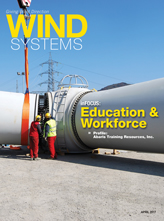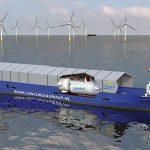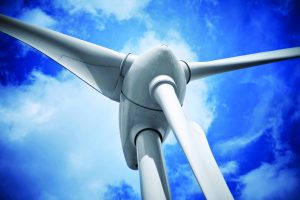Today’s wind-energy technology students want to compress their education into a year or less so they can enter the industry workforce right away. Similarly, industry employers can’t wait two years or longer for technicians to gain the skills and knowledge needed to be highly capable and trainable wind-turbine technicians. They need good technicians now. This pressure from both sides is pushing wind-energy training programs to consider becoming leaner with their curriculum.
The challenge that may soon affect wind-energy training teams involves which courses and topics to keep and which ones to drop in a shortened program. To help with this hypothetical question, a panel of wind educators and hiring managers were asked, “What are the most essential topics (skills and knowledge) that must be taught in the technical colleges that cannot be learned as effectively in the field?”

1. Safety
It probably comes as no surprise that “safety” should always be the single most important topic to be taught, and mastered, by students. A classroom/lab-based course in basic industrial safety (OSHA-10 Hour or, better yet, OSHA-30 Hour) should precede all other courses for the immediate and future well-being of students. Specific topics mentioned include: CPR/First Aid, NFPA 70E arc flash, confined space, rotating equipment, work-at-height/climbing/tower-rescue, pinch points, and, of course, lock-out/tag-out.

2. Rigging
Given that the workplace is close to 300 feet above the ground, having some classroom experience in securing a load to be lifted or lowered is essential. Since there is some basic physics knowledge required to rig a load safely, learning about sling loads (the tension on the slings caused by the way we use them), is not something a newly hired technician should be learning while they are hoisting a heavy piece of equipment to the nacelle. This skillset should be solid before they even touch the controls of a hoist or crane in the field.

3. Programmable Logic Controllers
Any technician can change filters and take oil samples every six months. The real challenge that separates essential technicians from everyone else is their ability to troubleshoot down turbines to get them up and running again. A solid understanding of the function of programmable logic controllers (PLCs), the program logic that runs them, the network hardware that makes them useful, and the circuits that keep them powered and functioning are essential to high-level troubleshooting. If students are introduced to troubleshooting best practices in their schooling, they can make their entry-level time in the turbines more fruitful. This future-troubleshooter perspective helps them see the whole turbine as a single system rather than an assembly of separate systems. It helps them create the habit of questioning why the turbine was designed as it was. This inquisitive attitude is a great motivator for a technician to seek increasingly higher-level training opportunities that benefit the company as much as the technician. Understanding the PLCs, the neural network of the turbine, is the key to this process.

4. Bolting
Torqueing and tensioning bolts may be the single most underestimated science in wind-energy technology. The old joke is that technicians should use the famous European standard for this by making the bolt “gutentight.” All joking aside, good bolting practices involve habits that result in good accuracy, precision, and consistency in final bolt tension. There is a tremendous amount of potential for error in bolting that all stems from a technician’s lack of understanding of the physics involved. Here is one example: A bolt is considered to be under the desired amount of tension when it is turned and tightened to the point that the friction between nut and bolt threads matches the torque force of the tool. If the instructions call for a dry torque, any oil or grease on the threads can cause an over-torqued and over-tensioned bolt that is prone to yield or failure of the bolt. Bolts are commonly shipped with a protective film of oil. Failure to thoroughly clean this oil can cause this dangerous situation. Deeper understanding of metallurgy helps a technician comprehend why a grade-8 bolt cannot be substituted for a grade-5 one. It helps a technician understand why one washer of a different alloy than the rest is corroding, and the previously torqued bolt now has mismatched torque marks. This is due to a dissimilar-metals reaction. Metallurgy also helps a technician to understand why a spring-loaded torque wrench needs to be set back to its lowest torque setting before being put away at the end of a torqueing session.

5. Electricity
Mechanical and hydraulic principles seem to be fairly easy for students to grasp without extensive time spent in a classroom. Electrical principles, on the other hand, require a structured curriculum to master. Alternating current and direct current circuits both exist in a wind turbine, and their voltages can range from a few volts to several hundred or even several thousand volts. Troubleshooting and repairing these circuits is not always as simple as opening the electrical junction box with the scorch marks and smoke damage. The ability to trace a multi-page electrical schematic and to understand its function is critical to troubleshooting as well as staying safe in a 300-foot-high power plant. The basic tool of electrical work is the digital multimeter. Wind-school graduates should be comfortable using this tool before entering the field. A basic understanding of power factor (reactive, apparent, and true power) is helpful as well; however, it is not covered in the curriculum of many wind schools. Only the best schools teach students how a frequency convertor functions, but this knowledge is critical for an ambitious career-climbing wind-turbine technician.
Skills That Didn’t Make the Cut
There are dozens of other skills and topics that likely will be covered briefly in short programs created by wind-technician programs. These skills and topics will no longer be given their own courses and units or assigned textbook chapters. However, instructors with field experience are aware of what students need to know before their first job. Instructors also know which skills and knowledge can be gained on-the-job or in the process of classroom activities not focused directly on those skills.
Turning a wrench, for example, may not be a valuable way to spend class time unless it is done as part of a full disassembly and reassembly of a component such as a pitch drive. Hydraulic systems seem to be easy for technicians to understand without the benefit of PowerPoints and lectures. By stripping down, inspecting, and rebuilding a pitch ram and directional control valve, students will experience an integration of learning even if these things are not part of formal lectures and textbook chapters anymore.
Basic computer skills, while essential for the job, really should be up-to-speed before students attend school. Students will be using MS Windows and MS Office applications while in school regardless of whether they are listed as learning objectives.
Options for students to attend more advanced courses following completion of a shortened program may become common at technical schools. Many operations and maintenance providers require technicians to complete continuing education units (CEUs) that offer additional ways technical schools can continue to meet the needs of the wind-energy industry while still speeding up the rate that graduates become available to fill field positions.
Conclusion
Ask 10 wind-energy instructors what five topics they would list and you might get as many different answers. Certainly, however, you will see quite a bit of overlap between the lists.
When this question was posted to wind-turbine technicians working in the field, the results were interesting. Many of the results had nothing to do with technical knowledge or skills. Specifically, the turbine technicians were asked to comment on the “most important skills or knowledge that you wish technicians had before getting hired to work uptower.” (Technicians are typically not permitted to speak publically due to company policy, so their names have been withheld.)
Here are some of the results:
- “Listening, communication, and patience.”
- “How to send up a heavy load properly!”
- “A teamwork mindset, no one is finished up tower unless the team is finished up tower.”
- “Common sense.”
- “Basic physical fitness.”
- “How to put your phone away and pay attention to what is happening in front of you, and anticipate what will happen next.”
Clearly, it seems the technicians are more focused on finding coworkers who are trainable, reliable, and team-oriented. These attributes are likely to be the most difficult for a school to address, but they are not impossible.
As courses focused on soft skills get squeezed out, perhaps this will increase pressure for the schools to recruit students with previous professional experience such as veterans and workers being laid off from other sectors of our energy industries.
Another solution is to include soft skills training by integrating it with the technical skills via team-oriented exercises.
One way or another, wind-energy technology schools must continue to meet, and hopefully exceed, the needs of America’s fast growing wind-energy industry.




































